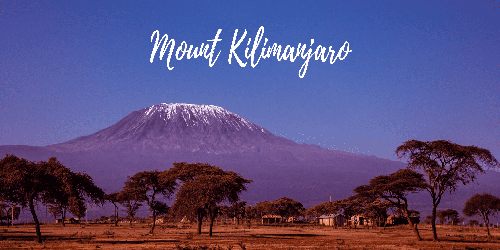Kilimanjaro volcano mass in northeastern Tanzania, near the Kenyan border. It is a dormant volcano in three volcanic cones, Kibo, Mavenzi and Shira Tanzania. It is a giant stratovolcano that started forming nearly a million years ago and consists of many layers of hardened volcanic ash, lava, pumice and tephra fragmented from volcanic eruptions. It is the highest mountain in Africa and the highest single free-standing mountain in the world, with the sea level 5,895 m (19,341 ft) above its surface and about 4,900 m (16,100 ft) above its plateau base. On October 5, 1889, Myers, Marangu Scout Ionas Kinala Lauro, and Austrian Ludwig Partsella topped the first. They first confirmed that there was a hole in Kibo, which was then filled with ice. The mountain is part of Kilimanjaro National Park and is a prime climbing destination. The mountain has been the subject of many scientific studies as the glaciers shrink and the icebergs disappear.
The geology of the volcanic interior is not well known, as large quantities of erosion have been observed which can expose the volcanic interior. This is a perfect place for ordinary people to climb Africa on a safari-quest. The Shining Mount, to give it its decadent name in Kiswahili, was built some 35 million years ago in a catastrophic dance of fire and ice through the formation of the Great African Rift Valley during the Pleistocene era. The vandalism activity at the center of the vein began about two and a half million years ago, the last significant event took place about 1.9 million years ago, just before the northern part of the building collapsed. The vein is at the top of a wide plateau at 3,800 meters (12,500 ft), which can be a filling call. Kilimanjaro was born three-quarters of a million years ago. The most recent activity, about 200 years ago, was the last eruption 360,000 years ago. Kibo has more than 250 parasitic cones in the northwestern and southeastern edges that formed 150,000 to 200,000 years ago and burst pycrobasalts, trachebasalts, anchorites, and basanites. The ancient glaciers of Kilimanjaro provide an ice core record of climate change for nearly 12,000 years, covering periods of extreme drought and rising levels of water and ice. Once again the ice retreated. Over the next decades, ascendants of the Kilimanjaro Mountains will see the peak as empty and black, as it was 20,000 years before the Holocene period of the last 10,000 years. According to reports collected in the nineteenth century from Masai, the steep lake on the eastern side of Kibo was the site of a village destroyed by a fire.
The mountain has been known to African people since ancient times. Ptolemy’s report on sailors mentions a moon mountain and a spring of the Nile River, which finds that historical data do not allow the Eurasian mountains, such as the mountains of Kenya in East Africa, to differentiate between the Ruonga Mountains and the Kilimanjaro Mountains. The Kilimanjaro Formation became known to Europeans in 1848 by the German missionaries Johannes Rebmann and Johann Ludwig Krieff, although there were snow hills so close to the equator that the news was not believed more than a decade later. The Kibo summit was first reached in 1889 by German geographer Hans Maier and the Austrian mountaineer Ludwig Part seller. In 1989, the organizing committee, which celebrated the 100th anniversary of the first ascent, decided to issue a posthumous certificate to the African Potter-Guides who came up with Myers and Part seller. The Kilimanjaro region is one of Tanzania’s main producers of light coffee, barley, wheat, and sugar; Other crops include sisal, maize (maize), beans, banana, the bark of species (acacia), cotton, pyrethrum, and potato. The area is populated by the Chaga (Chaga), Pare, Kahne and Mbugu communities. At the southern foot of Kilimanjaro, the city of Moses is the main center and foundation of the main journey. Their wealth is now based on banana and coffee gardens, but they no longer accept barter payments in beads and clothing. Because climbing can reach the summit of Kibo without the help of mountaineering equipment, thousands of hikers try to climb every year.















